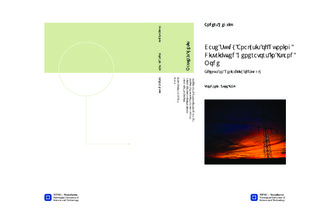Case Study Analysis of Running Distributed Generators in Island Mode: Effects on Reliability of Supply
Master thesis
Permanent lenke
http://hdl.handle.net/11250/257386Utgivelsesdato
2012Metadata
Vis full innførselSamlinger
- Institutt for elkraftteknikk [2503]
Sammendrag
As a consequence of increased government efforts to reduce local Norwegian CO_2-emissions the development of small distributed generators have increased. This development is assumed to continue, but at an increasing incremental cost due to the inferior profitability of remaining prospects. To maintain profitability of smaller and high cost distributed generators, cost savings must be implemented. Quality of supply is a significant factor in determining potential profitability. Hence, a significant potential in cost reduction lies in increasing quality of supply. This can be achieved by utilizing the decentralized nature of these power producers by enabling intended island operation. By enabling these generators to run in intended island mode, they are able to supply their local grid with power when fallout of the main grid or other components occurs. This increases the uptime for local customers and therefore increases quality of supply. Five different grids are modeled in PowerFactory based on collected empirical data for the evaluation of the potential for islanding in Norway. With these models different cases utilizing islanding schemes are simulated and the reliability of these configurations compared to a base case representing normal operations. The results from this analysis suggest big reductions in the reliability indices Energy Not Supplied and System Average Interruption Frequency are possible. In the thesis the reductions achieved are in the 10%-60% range of the base case. The estimated savings earned from increased reliability of supply does not justify the assumed investment needed, but the numbers are not conclusive. Better estimates of expenses and assessing other grids with better prerequisites for islanding could indicate to be profitability.
